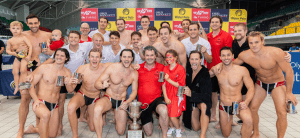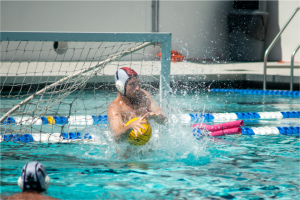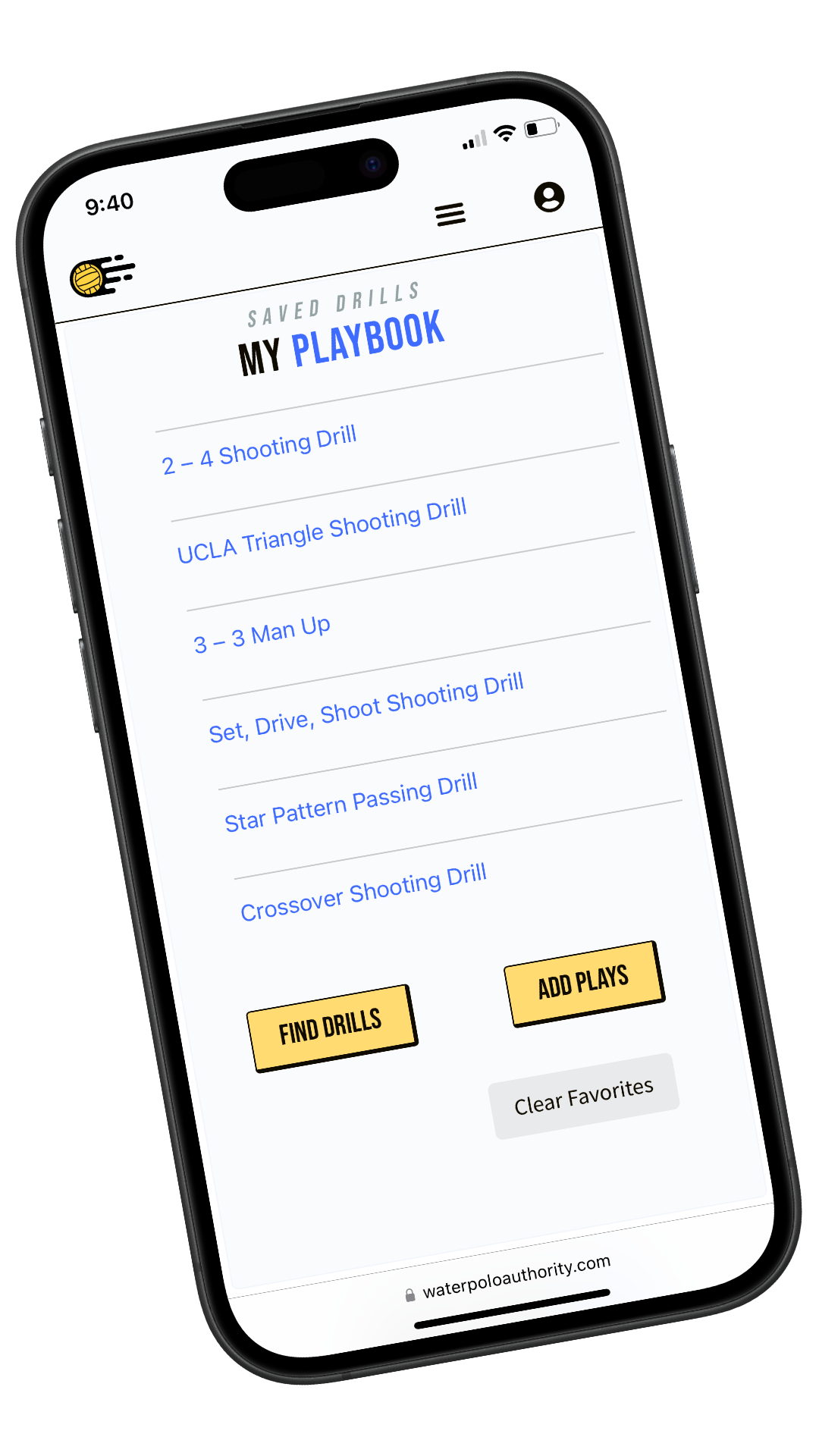Changing up your water polo practice structure can be beneficial for maintaining player engagement, addressing different training needs, and preventing burnout. A varied practice routine not only keeps athletes motivated and excited but also ensures comprehensive development by targeting different aspects of their game.
What’s included in this article:
- Practice Variations
- Training Components
- Example Practice Structures
Examples of Practice Variations
Standard Practice
A typical water polo practice starts with warm up swim sets before getting to the main conditioning sets of the day. Athletes then get into leg strength drills, passing, and shooting before scrimmaging.
Scrimmage Days
Work on game preparedness by splitting into evenly matched teams. Keep score to increase the competitiveness at practice.
Themed Practices
Design practices around specific themes, such as defense, counterattacks, or power plays. Each themed practice can focus on particular skills and strategies, providing depth and focused improvement in that area.
Rotating Stations
Set up different stations with specific drills at each, such as passing, shooting, and leg strength. Players rotate through the stations, ensuring they work on multiple skills within a single practice session.
Skill Challenges
Introduce friendly competitions and challenges, such as shooting accuracy contests or relay races. These not only make practice fun but also push players to perform at their best.
Cross-Training/Drylands
Incorporate elements from other sports to enhance overall athleticism. Activities like swimming races, basketball for teamwork and coordination, or yoga for flexibility can provide beneficial cross-training. Run through a water polo specific dryland practice so players know how to workout and exercise on their own.
Embed from Getty ImagesFilm Sessions
Rainy day? No problem. Watch game film from your team to review how you played to find areas to improve upon or head over to to our guide on watching water polo online to find professionally streamed games.
Training Session Building Blocks
A typical water polo practice structure usually consists of some form of conditioning, drills, and scrimmaging. Coaches can mix practices up by choosing different combinations of practice components depending on what aspect of the game they want athletes to work on.
Here are some key components of water polo practices to add to your training schedule.
- Drylands
- Warm Up
- Swimming Conditioning
- Leg Strength
- Passing Drills
- Shooting Drills
- Game Situation Drills
- 6-on-5 Practice
- Skill Position Training
- Offensive Plays
- Defense Strategy
- Chalk Talk/Game Film
Example Practice Structures
1. Technical Skills Focus
Focusing on technical skills at practice is great for both newer and experienced players. During this type of practice you might choose to focus on passing, shooting, and skill positions. Here are some examples of practice components for a technical skills focused practice:
- Ball control: swimming/dribbling the ball, passing from a horizontal position, tip passes, wet passes, upsliding, faking
- Passing: using both hands, long passes, set passes, cross face passing
- Shooting: accuracy drills like hitting the back of the net or hanging caps, skip shots, bar in shots, rapid fire shooting, working different angles
- Skill Positions: hole set, center defense, posting up
An example practice structure might look like this:
| Drill | Description | Time |
| Warm Up | Combo of 50s, 100s, and legs to warm up | 10 min. |
| Dexterity Work | Give each player a ball, 25s in different styles like dribbling, hand transfer, ball in hand, upsliding | 5 – 10 min. |
| Dribbling | Swimming with the ball relays | 5 – 10 min. |
| Passing | Groups of 2-5 players, passing drills working on different passing styles like set passes, off hand, faking | 10 – 15 min. |
| Shooting/Skill Positions | Majority of players focus on shooting drills while small groups work on skill position training | 30 min. |
| Pressure Passing | Set up pressure passing drills to work on fouls and | 10 min. |
| Wet Shots | Counter attack drills to work on long passes and finishing 1:1s | 15 min. |
2. Conditioning Focus
Every aspect of the game gets easier when players are in better shape. While it may not be the most fun practice, it’s certainly the most rewarding.
Water polo players need to focus on short bursts of speed, quickly changing directions, and getting higher up out of the water.
Here’s an example practice structure to work on conditioning:
| Drill | Description | Time |
| Swimming | Warm up, swim set, cool down | 30 – 45 min. |
| Legs | Hands, wrists, elbows out. Jugs, weight belts, medicine balls. Jumps and lunges. Wrestling treading drills | 15 min. |
| Transitioning | Suicides swim drills or change direction on coaches whistle | 10 min. |
| Passing | Focus on getting up high to pass. Elevator faking. | 10 min. |
| Wet shots | Counter attack drills and wet shots | 15 min. |
| Sprints/Cool down | Swim off contest, sprints with ball, T to T races | 15 min. |
3. Game Preparedness Focus
Preparing for real-game scenarios helps players develop their tactical awareness, decision-making skills, and overall game performance. During this type of practice, the emphasis is on simulating match conditions and practicing strategic plays. Here are some examples of practice components for a game preparedness focused practice:
Game Situation Drills: Simulating real-game scenarios such as counterattacks, transitions, and end-game strategies. This includes drills like 3-on-2 fast breaks, 6-on-5 power plays, and defending man-down situations.
Scrimmages: Full or half-court games that allow players to practice in a game-like environment. These scrimmages should focus on implementing strategies and improving team cohesion.
Tactical Drills: Working on specific offensive and defensive tactics, such as pressing defense, zone defense, pick and rolls, and driving plays. Emphasize understanding and execution of team strategies.
| Drill | Description | Time |
| Warm Up | Run through your team’s pregame warm up routine | 20 min. |
| Man Up | Focus on good field blocking on defense and quick precise passes on offense | 20 min. |
| Half Court | Work on pressing and dropping on defense and pressure passing on offense | 20 min. |
| Scrimmage | Keep score for more competitive games | 45 – 60 min. |



